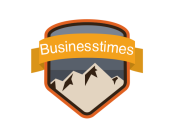Generators are now part of core site literacy. Crews must know how to size, deploy, and maintain portable and standby units, manage load balance, and switch safely between sources. They also need to understand the basics of electrical safety under construction rules. That includes grounding, cord-and-plug practices, and generator use for temporary power. These are not optional expertise; in fact, they sit inside the same compliance framework that governs all electrical work.
Why skills must change
The sector faces a sustained shortage of experienced people. Employers will need hundreds of thousands of new workers in the near term, even as project pipelines expand. Skills gaps slow delivery and increase risk. Hiring alone will not solve it; companies must upskill existing staff and create faster training pathways. Global outlooks reinforce this: employers expect material shifts in core skills over the next five years, with more emphasis on operations, quality, and technology use.
A practical skills map for “next-gen” sites
Training should focus on four layers:
- Safe power and temporary works. Teach generator setup, load planning, protection devices, refueling, noise control, and emissions awareness. Tie that to electrical-safety rules used on construction sites so crews can apply one standard everywhere.
- Digital coordination. Make Building Information Modeling (BIM) and basic model navigation mandatory for supervisors and foremen. Introduce digital twins where available, to brief tasks, pre-check clashes, and plan lift paths. Use VR/AR modules to rehearse high-risk tasks and hazard recognition. These tools shorten learning curves and improve decision-making on-site.
- Industrialized construction methods. Off-site and modular workflows change the skill mix: more assembly, logistics, and quality control; fewer improvised fixes. Workers need instruction in kitting and factory-style checks. Evidence shows benefits in speed, waste reduction, and consistency when teams shift to controlled production.
- Low-emission equipment and electrification. Battery and hybrid machines are arriving fast. Training must cover charging, duty cycles, energy planning, and safe cable management. Cities are beginning to mandate low- or zero-emission sites, which makes this knowledge commercial, not just environmental.
Building the curriculum: short, hands-on, repeatable
Use micro-credentials that stack toward roles. Start with a one-day power and generator lab for all field staff. Add a two-day “digital essentials” course for supervisors on BIM viewers, markups, and model-based method statements. Create a recurring two-hour toolbox series for energy planning and electrified equipment—charging windows, cable routing, and noise limits. Keep sessions short. Build them around scenarios. Assess skills by task, not by attendance.
Site power literacy (core module)
Teach crews to:
- Select the generator size from the anticipated load and the startup surge.
- Set up grounding and bonding correctly.
- Protect cords and connectors, and separate fuel storage and refueling areas.
- Switch from grid to standby without stressing equipment.
- Record runtime, fuel, and maintenance in one log tied to the daily report.
Anchor the module to construction electrical rules and to the clause covering portable and vehicle-mounted generators. The goal is consistent practice rather than ad-hoc fixes under time pressure.
Warehouse skills that feed the site
Poor storage pushes delays to the field. Mid-career upskilling should therefore include industrial racking systems. Cover layout basics, load signs, aisle discipline, damage categories, and the inspection regime set out in the European racking standard. Teach how to document defects, tag unsafe bays, and escalate repairs. In many markets, an annual expert inspection by a competent person is expected practice; weekly in-house checks catch issues early. Treat racking as critical infrastructure, not furniture.
Lifting and access skills for fewer incidents
Mobile elevating work platforms (MEWPs) are central to modern projects. Training must match current rules and guidance. Operators should learn pre-use checks, work-zone hazard scans, safe travel, fall-protection choices, emergency lowering, and rescue planning. Supervisors need a parallel course on selecting the right machine for the task and controlling exclusion zones. Training providers map courses to updated ANSI A92 frameworks in North America and to local equivalents elsewhere. OSHA’s rules also set clear expectations for aerial lift use and labeling.
Electrification: planning the energy as a resource
Electric machines change constraints. Crews must schedule charging without halting production. Planners need to allocate site power capacity and lay safe temporary cabling. Supervisors must watch duty cycles and rotate equipment to match task intensity. Cities like Oslo show how policy can accelerate the shift; as equipment availability grows, more clients will ask for low-emission sites. Prepare now.
What to teach next
Add modules on:
- Energy planning for electrified fleets. Duty cycles, charging windows, and grid constraints.
- Advanced logistics for modular delivery. Load sequencing, just-in-time staging, and quality locks at handover.
- VR safety drills. Confined spaces, spotter communication, and lift rescues, delivered as short refreshers.
Measure outcomes that leaders respect
Track three numbers: incident rate, schedule adherence, and rework hours. Add energy use per task for electrified equipment and retrieval time for warehouse picks. Use these to refine modules and to target weak spots. Publish results each quarter so crews see the payoff.
Conclusion
Next-gen construction needs a workforce that can manage power, move materials with discipline, and work at height with confidence. Build that capability with short, practical modules tied to real tasks and current rules. Link digital tools to daily work. Treat storage and access as production systems, not support functions. Do this well and projects gain speed, predictability, and fewer surprises—from the first generator test to the last lift on the cherry picker.

